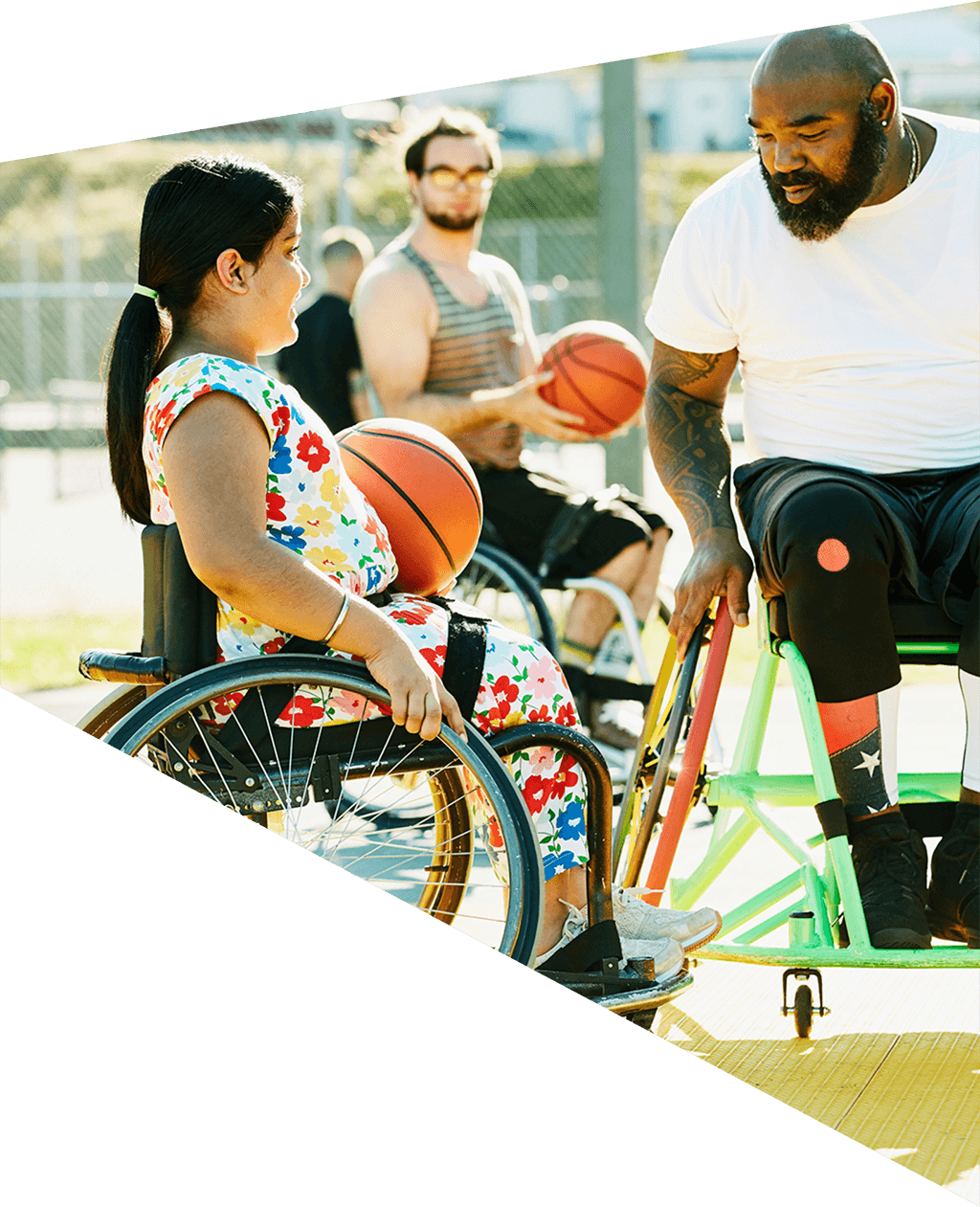Biosimilars are as safe and effective as the originator biologic2
They are thoroughly evaluated by the FDA2
They can provide more treatment options—and potentially lower costs2
Providers and patients face a good deal of misinformation about biosimilars, and it’s important that they’re armed with resources that can dispel certain misleading or untrue information about biosimilars.1
The concept of “biosimilarity” can cause confusion, because the word “similar” implies that there is a difference of some sort. It’s important to note that while the natural source of biosimilars leads to inherent variation (i.e., small changes to the protein molecule),3 all biosimilars must be proven to have no clinically meaningful differences in safety or efficacy from the original biologic.2
The FDA’s evaluation process ensures that all biosimilar products meet the FDA’s high standards for approval.2
Also, the fact that biosimilars are not put through as many clinical studies as their originator biologics could lead to similar concerns around safety and efficacy. While the clinical data package supporting biosimilar approval is more streamlined compared to the originator biologic, Providers can make known that the overall data package is equally rigorous. The FDA can request a biosimilar manufacturer to conduct additional studies prior to granting approval if they are not convinced of the comparability.1
Each originator biologic is assigned a 4-letter suffix at the end of its generic name. A biosimilar will carry the same generic name but will have its own unique suffix. This is required to differentiate it from its originator biologic and clearly identify it to promote pharmacovigilance.4 It does not mean there are safety or efficacy differences between the products.5
Questions also remain around the concept of interchangeability.
This is a status granted to a biosimilar that has undergone additional studies so that it may be substituted at the pharmacy for the originator biologic without the intervention of the prescribing health care provider—much like how generic drugs are routinely substituted for brand-name drugs.
Companies must submit an application with adequate information to support an interchangeability determination for their product to be approved as an interchangeable biosimilar.6
While this designation provides liability protection to pharmacists, it merely permits switching between products as needed. Interchangeability is not a necessity for a biosimilar to be prescribed. The necessary FDA review process already ensures that the biosimilar has no clinically meaningful differences from its originator biologic and demonstrates comparable safety and efficacy.2


The concept of switching patients from originator drugs to biosimilars—and from a biosimilar to a different biosimilar—has also generated a great deal of discussion. Fears exist among providers that moving a patient to a biosimilar presents some kind of inherent risk because biosimilars contain variation as part of their manufacturing process.10 But it’s again important to note that FDA-required studies go to great lengths to ensure there are no clinically meaningful differences between biosimilars and their originator biologics, and that they are both safe and effective.2
Learn more about the key considerations for biosimilars with each of the following groups.
To learn more about the promise of biosimilars, the impact they can create, and our work in this space, visit the following pages:
1. Cohen H, McCabe D. The importance of countering biosimilar disparagement and misinformation. BioDrugs 2020;34(4):407-414.
2. Biosimilar and interchangeable biologics: More treatment choices. U.S. Food and Drug Administration. October 12, 2021. https://www.fda.gov/consumers/consumer-updates/biosimilar-and-interchangeable-biologics-more-treatment-choices.
3. Mellstedt H, Niederwieser D, Ludwig H. The challenge of biosimilars. Ann Oncol. 2008;19(3):411-419.
4. What’s in a biologic or biosimilar name? Biologics Suffix. 2019. https://www.biologicssuffix.com/.
5. Suffix vs no suffix: Naming biologics and biosimilars. Biosimilars Council. 2019. https://biosimilarscouncil.org/wp-content/uploads/2019/12/naming-biosimilars-suffix.pdf.
6. Interchangeable biological products – U.S. food and drug administration. U.S. FDA. https://www.fda.gov/media/151094/download.
7. Bridges L, White DW, Worthing AB, et al. The science behind biosimilars. Arthritis & Rheumatology. February 7, 2018. Accessed June 28, 2023. https://onlinelibrary.wiley.com/doi/10.1002/art.40388.
8. Decreasing drug costs through generics and Biosimilars. National Conference of State Legislatures. https://www.ncsl.org/health/decreasing-drug-costs-through-generics-and-biosimilars. Published January 21, 2022.
9. Biosimilars in the United States 2023-2027. IQVIA. https://www.iqvia.com/insights/the-iqvia-institute/reports/biosimilars-in-the-united-states-2023-2027. Published January 31, 2023.
10. Cohen HP, Blauvelt A, et al. Switching reference medicines to biosimilars: A systematic literature review of clinical outcomes. Drugs 2018;78:463–478.
Do not use CAMCEVI® in patients with hypersensitivity to GnRH, GnRH agonist analogs, or any of the components of CAMCEVI as anaphylactic reactions to these drugs have been reported in the medical literature.
CAMCEVI, like other GnRH agonists, causes a transient increase in serum levels of testosterone during the first week of treatment which can cause transient worsening of symptoms. As with other GnRH agonists, cases of ureteral obstruction and spinal cord compression, have been observed, which may contribute to paralysis with or without fatal complications.
Patients with metastatic vertebral lesions and/or with urinary tract obstruction should be closely observed during the first few weeks of therapy.
Hyperglycemia and an increased risk of developing diabetes have been reported in men receiving GnRH agonists. Blood glucose levels should be monitored and managed according to current clinical practice.
Increased risk of myocardial infarction, sudden cardiac death, and stroke has been reported in association with the use of GnRH agonists. The risk appears low based on the reported odds ratios, and should be evaluated carefully along with cardiovascular risk factors when determining a treatment for patients with prostate cancer. Patients should be monitored for cardiovascular disease and be managed according to current clinical practice.
Androgen deprivation therapy may prolong the QT/QTc interval. Consider periodic monitoring of electrocardiograms and electrolytes.
Convulsions have been reported in patients receiving GnRH agonists, like CAMCEVI. Patients experiencing convulsions should be managed according to the current clinical practice.
Monitor serum levels of testosterone following injection of CAMCEVI.
Based on findings in animal studies and mechanism of action, CAMCEVI may cause fetal harm when administered to pregnant women.
The most common (≥10%) adverse reactions during a median follow-up of 336 days were hot flush, hypertension, injection site reactions, upper respiratory tract infections, musculoskeletal pain, fatigue, and pain in extremity.
CAMCEVI is indicated for the treatment of adult patients with advanced prostate cancer.
Click here for full Prescribing Information.
©2024 Accord BioPharma, Inc. All rights reserved WS-ABI-2200001
| Cookie | Duration | Description |
|---|---|---|
| cookielawinfo-checkbox-analytics | 11 months | This cookie is set by GDPR Cookie Consent plugin. The cookie is used to store the user consent for the cookies in the category "Analytics". |
| cookielawinfo-checkbox-functional | 11 months | The cookie is set by GDPR cookie consent to record the user consent for the cookies in the category "Functional". |
| cookielawinfo-checkbox-necessary | 11 months | This cookie is set by GDPR Cookie Consent plugin. The cookies is used to store the user consent for the cookies in the category "Necessary". |
| cookielawinfo-checkbox-others | 11 months | This cookie is set by GDPR Cookie Consent plugin. The cookie is used to store the user consent for the cookies in the category "Other." |
| cookielawinfo-checkbox-performance | 11 months | This cookie is set by GDPR Cookie Consent plugin. The cookie is used to store the user consent for the cookies in the category "Performance". |
| viewed_cookie_policy | 11 months | The cookie is set by the GDPR Cookie Consent plugin and is used to store whether or not user has consented to the use of cookies. It does not store any personal data. |